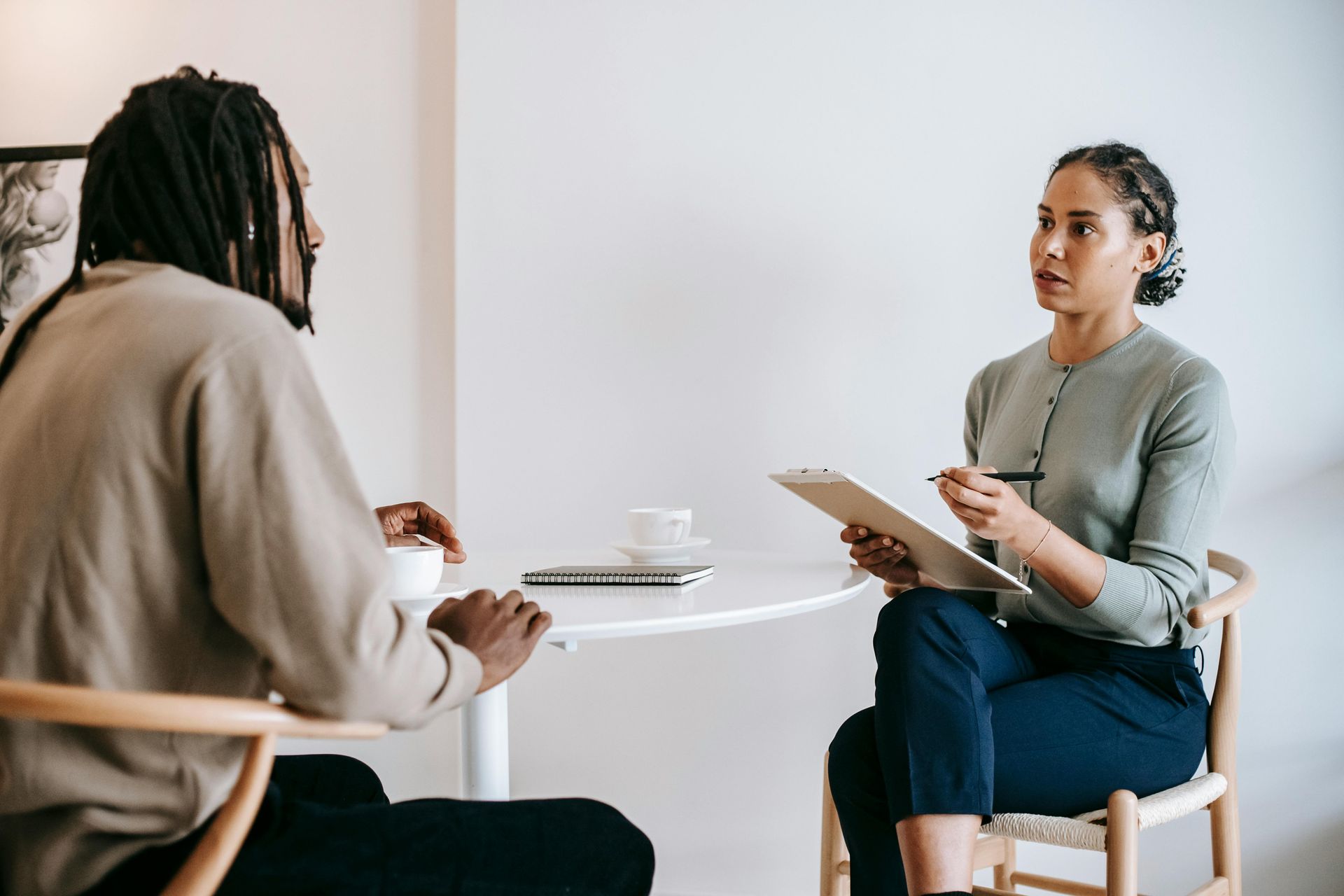Discover the Power Within Healing through Ego-State Therapy
In our fast-paced world, mental health is increasingly becoming a topic of vital importance.
Among various therapeutic approaches, Ego-State Therapy stands out for its unique ability to help individuals understand and heal their inner selves. But what exactly is Ego-State Therapy, and how can it benefit you?
In this comprehensive guide, we’ll explore the ins and outs of this innovative therapy, providing valuable insights for anyone interested in mental well-being.
Introduction to Ego-State Therapy
Developed by John and Helen Watkins in the 1970s, Ego-State Therapy has proven effective in treating a variety of psychological issues, from trauma to anxiety.
Understanding Ego States
What are Ego States?
Ego states are distinct parts of our personality that emerge in response to different situations and experiences. Each state has its own set of behaviors, thoughts, and emotions.
Some ego states may be more nurturing, while others might be critical or protective. Understanding these states helps individuals gain a deeper insight into their actions and reactions.
The Role of Ego States in Daily Life
Everyday interactions are influenced by our various ego states. For instance, the "parent" state might emerge when disciplining a child, while the "child" state could appear during playful activities. Recognizing these states can improve self-awareness and interpersonal relationships.
Common Ego States
Typical ego states include the Inner Child, the Nurturing Parent, and the Critical Parent. Each state has its unique characteristics and functions. Understanding these common states can provide a foundation for identifying and working with other ego states within oneself.
The Origins of Ego-State Therapy
Development by John and Helen Watkins
John and Helen Watkins were pioneers in the field of psychotherapy. Their work in the 1970s led to the development of Ego-State Therapy. They believed that by addressing the different parts of the personality, individuals could achieve greater emotional and psychological well-being.
Influences and Inspirations
The Watkins were inspired by earlier psychological theories, including Freud's concept of the id, ego, and superego, as well as the work of Carl Jung. These influences helped shape Ego-State Therapy into a comprehensive approach to mental health.
Evolution Over Time
Since its inception, Ego-State Therapy has evolved to incorporate new techniques and insights. Today, it is used by therapists worldwide to treat a wide range of psychological issues.
How Ego-State Therapy Works
The Therapeutic Process
Ego-State Therapy involves identifying and communicating with different ego states. Therapists guide clients through this process, helping them understand the origins and functions of each state. This therapeutic dialogue can lead to profound healing and self-discovery.
Techniques and Methods
Common techniques in Ego-State Therapy include guided imagery, hypnosis, and role-playing. These methods facilitate communication with ego states and promote emotional healing.
Benefits of Ego-State Therapy
Healing Trauma
One of the most significant benefits of Ego-State Therapy is its ability to heal trauma. By addressing the specific ego states that hold traumatic memories, individuals can release emotional pain and achieve greater emotional stability.
Improving Self-Awareness
Ego-State Therapy enhances self-awareness by helping individuals understand the different parts of their personality. This self-knowledge can lead to improved decision-making and emotional regulation.
Enhancing Relationships
By understanding their ego states, individuals can improve their interpersonal relationships. Recognizing the needs and motivations of different states can lead to more empathetic and effective communication.
Challenges and Considerations
Potential Risks
While Ego-State Therapy offers many benefits, it is essential to be aware of potential risks. For some individuals, exploring deep-seated emotional issues can be overwhelming. It is crucial to work with a skilled therapist who can provide appropriate support.
Finding a Qualified Therapist
Finding a qualified therapist with experience in Ego-State Therapy is essential for effective treatment. Look for professionals who have specialized training and a track record of success in this therapeutic approach.
Integrating with Other Therapies
Ego-state therapy can be integrated with other therapeutic approaches, such as Cognitive Behavioral Therapy (CBT) or Dialectical Behavior Therapy (DBT). This integration can enhance the overall effectiveness of treatment.
Steps to Start Ego-State Therapy
Assessing Readiness
Before beginning Ego-State Therapy, it is essential to assess your readiness. Consider your current emotional state and whether you feel prepared to explore deep-seated issues.
Initial Consultation
The first step in starting Ego-State Therapy is an initial consultation with a qualified therapist. During this session, you can discuss your goals and determine if this therapeutic approach suits you.
Setting Goals
Setting clear goals is crucial for successful therapy. Work with your therapist to identify specific areas you want to address and the outcomes you hope to achieve.
Techniques Used in Ego-State Therapy
Guided Imagery
Guided imagery involves visualizing specific scenes or scenarios to communicate with ego states. This technique can help individuals access and heal emotionally charged memories.
Hypnosis
Hypnosis is often used in Ego-State Therapy to facilitate deep relaxation and open communication with ego-states. This altered state of consciousness can make exploring and healing emotional wounds easier.
Role-Playing
Role-playing can help individuals understand the dynamics between different ego states. By acting out specific scenarios, clients can gain insights into their behaviors and learn new coping strategies.
Common Misconceptions
Misunderstanding Ego States
One common misconception about Ego-State Therapy is that it involves multiple personality disorders. In reality, ego states are a normal part of everyone's personality, and this therapy helps individuals understand and integrate these states.
Belief in Instant Results
Another misconception is that Ego-State Therapy provides instant results. While some individuals may experience rapid improvements, lasting change often requires time and commitment.
Fear of Confronting Painful Memories
Some individuals may fear that Ego-State Therapy will force them to confront painful memories. While this therapy involves exploring emotional wounds, it is done in a safe and supportive environment.
Integrating Ego-State Therapy into Daily Life
Self-Reflection
Integrating the insights gained from Ego-State Therapy into daily life involves regular self-reflection. Take time to check in with your ego states and understand their needs and motivations.
Mindfulness Practices
Mindfulness practices can complement Ego-State Therapy by promoting present-moment awareness. Techniques such as meditation and deep breathing can help you stay grounded and connected to your inner self.
Continued Learning
Continued learning about Ego-State Therapy and related topics can enhance your understanding and application of this therapeutic approach. Consider reading books, attending workshops, or participating in online courses.
Ready to take the next step in your mental health journey?
Ego-State Therapy offers a powerful framework for understanding and healing the different parts of our personality. By working with skilled therapists at Accentus Health and committing to the process, individuals can achieve profound emotional and psychological well-being.
Whether you are struggling with trauma, or anxiety, or simply seeking greater self-awareness, Ego-State Therapy can provide valuable insights and tools for personal growth.
Contact us to learn more about this innovative therapy today and unlock the potential within you.
Local to Indianapolis? Call us to discuss your options.
(317) 721-4169
Cited Sources:
Shapiro, Francine. “The role of eye movement desensitization and reprocessing (EMDR) therapy in medicine: addressing the psychological and physical symptoms stemming from adverse life experiences.” The Permanente journal vol. 18,1 (2014): 71-7. doi:10.7812/TPP/13-098
Wilson, Gemma et al. “The Use of Eye-Movement Desensitization Reprocessing (EMDR) Therapy in Treating Post-traumatic Stress Disorder-A Systematic Narrative Review.” Frontiers in psychology vol. 9 923. 6 Jun. 2018, doi:10.3389/fpsyg.2018.00923
QUICK LINKS
FREE CONSULTATION
Experiencing depression or a neurological disorder? Remember, you are not alone. Get help today!

TMS THERAPY CAN HELP WITH:
- Depression
- Lack of Joy
- Sadness and Despair
- Low Mood
- Lethargy
- Insomnia
- Oversleeping
- Social Isolation
- Self-Harm
- Substance Abuse
- Suicidal Ideation
- Alcoholism














